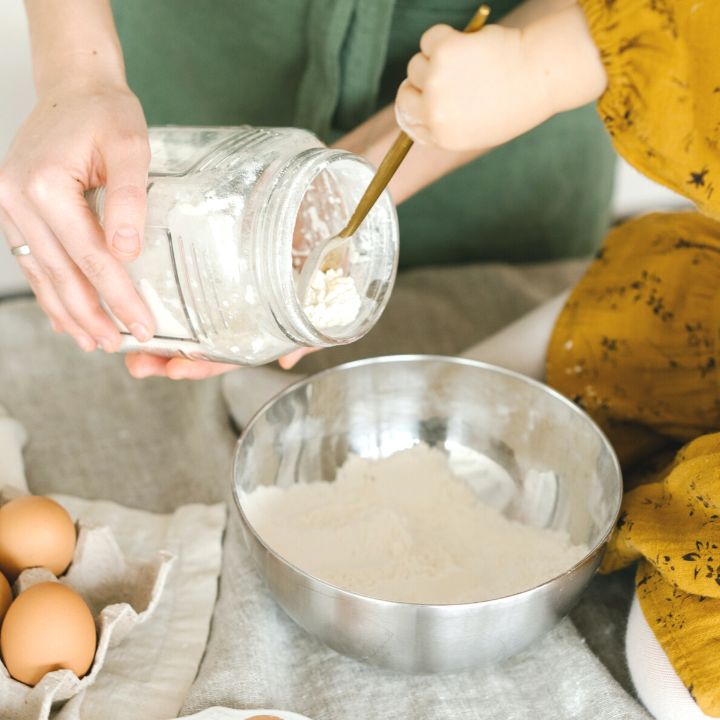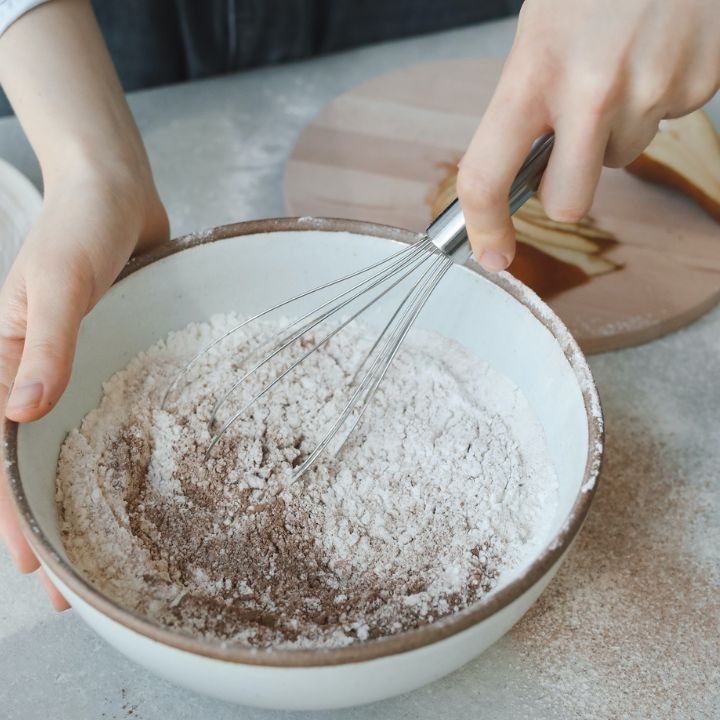Flour is One of the Base Ingredients in Baking
Alternative Flours & Flavors
Flour is a staple ingredient in baking that provides structure, texture, and flavor to baked goods. However, with an increasing number of people seeking gluten-free or alternative flours for health, dietary, or personal reasons, there are now many alternative flours available to use in baking.




Most Commonly Used Flours
All-purpose flour is a blend of hard and soft wheats that can be used in a variety of baked goods, from cakes and cookies to breads and pastries. It has a moderate protein content and a neutral flavor, making it a versatile option for baking.
Bread flour is a high-protein flour that is specifically designed for making yeast breads. It has a higher gluten content than all-purpose flour, which helps the dough rise and develop a strong structure.
Pastry flour is a low-protein flour that is specifically designed for making delicate baked goods, such as pie crusts, cakes, and pastries. It has a finer texture and lower gluten content than all-purpose flour, which helps to create a tender crumb and delicate texture.
Whole wheat flour is made from the entire wheat kernel, including the bran, germ, and endosperm. It has a nutty, slightly bitter flavor and a denser texture than all-purpose flour. Whole wheat flour can be used in a variety of baked goods, but it is best used in combination with all-purpose flour, as it can be heavy and dense when used on its own.
Almond flour is made from ground almonds and is a popular alternative to traditional wheat flour. It is naturally gluten-free and has a rich, nutty flavor that works well in a variety of baked goods, including cakes, cookies, and breads.
Coconut flour is made from ground coconut and is a gluten-free alternative to traditional wheat flour. It has a slightly sweet, coconut flavor and is high in fiber and protein. Coconut flour is very absorbent, so it typically requires more liquid in recipes and can be heavy and dense when used on its own. When baking with coconut flour, it is best to use a combination of coconut flour and other alternative flours to achieve the desired texture.
Oat flour is made from ground oats and is a gluten-free alternative to traditional wheat flour. It has a slightly sweet, nutty flavor and a dense texture that works well in a variety of baked goods, including cakes, cookies, and breads.
Buckwheat flour is made from ground buckwheat and is a gluten-free alternative to traditional wheat flour. It has a strong, nutty flavor and a dense texture that works well in a variety of baked goods, including cakes, cookies, and breads.
Chickpea flour is made from ground chickpeas and is a gluten-free alternative to traditional wheat flour. It has a slightly nutty flavor and a dense texture that works well in a variety of baked goods, including cakes, cookies, and breads.
Baking with Alternative Flour
When using alternative flours in baking, it is important to keep in mind that they may behave differently than traditional wheat flour and may require adjusting the recipe to achieve the desired results. For example, alternative flours may absorb more liquid than wheat flour, so it may be necessary to use more liquid in the recipe. Additionally, alternative flours may not have the same binding properties as wheat flour, so it may be necessary to use additional binders, such as eggs or xanthan gum, to achieve the desired texture.
There are many alternative flours available to use in baking, each with its own unique flavor and texture. When using alternative flours, it is important to experiment and adjust the recipe to achieve the desired results. Whether you are seeking a gluten-free option or simply looking for a new baking experience, alternative flours are a great way to add variety and flavor to your baked goods.

